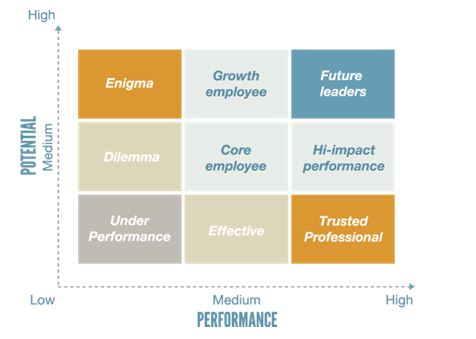What is Succession Planning?
The concept of succession is several centuries old. In the days of heroic knights, magnificent palaces and bejeweled crowns, kings used to spend years training their sons to mind affairs of the kingdom’s administration and protection. This was done to ensure that when the king is not able anymore, the crown prince can confidently take over the throne, minimizing instability within the kingdom.
If you have ever watched the brilliantly pictured TV series, Game of Thrones, you know just how important it is for those in power to prepare their for their succession. For without a proper succession plan, the throne is open to a free-for-all, which could only mean anarchy.
The primary need for succession planning in the current day corporate world is much the same – to maintain continuity and stability.
What is the Importance of Succession Planning?
There could be nothing more critical and stressful than a situation when a leader leaves your organisation, and there is no one to plug the gap he has left behind. The wrong (or delayed) replacement for the vacant leadership role can lead to a plummet in stakeholder confidence, drop in profits and ultimately the disintegration of your entire enterprise!
So a good succession plan is an investment, worth its weight in gold. It helps in four very important ways:
- Seamless Handover: In the event of death, retirement, resignation or any terminal illness; efficient succession planning ensures a smooth transition between old and new leadership and reduces disruptions to your business when you’re away
- Build Leadership: It aids in building a pipeline of qualified, motivated people in your company, who have a clear understanding of the shoes they need to fill
- Retention of Top-Performing Employees: It also prepares a clear career path for top-performing employees, thus providing the motivation for them to stay with your company for a longer time
- Image building: It projects the image of your company as one invests in its people and provides opportunities and support for advancement
Succession planning is one of the most talked about systematic processes in HR, but still few organizations manage it well.
** FREE CASE STUDY
Let us map out a scenario in a family business to understand this HR concept better:
Mark is the Chairman of a family run textile business, who has the love and respect of his family, clients and employees. The old trooper has been the owner and manager of the business for 50 years, but was recently diagnosed with a rapidly progressing case of Alzheimer’s disease. Now he is unable to manage the business.

He has three sons, who have no interest in the family business and a nephew (Jake) who is very knowledgeable about the industry but not groomed to make up for Mark’s absence. In such a situation, the questions that can arise:
- Picking a successor is a long drawn process. In the interim, what if a wrong decision is taken, on behalf of Mark, regarding an important deal? What of the financial and perceptual impact on the business?
- What if stakeholders (employees, dealers and government officials) are just not able to accept someone new, and fairly a stranger, in Mark’s place?
- Since Mark is getting forgetful, who has enough company know-how and seniority to decide on the successor?
- Also, shouldn’t the successor of a flourishing business have time to learn under the guidance of the chairman before taking on such a huge responsibility?
To prevent such issues from developing, the company should outline a succession plan that is:
- Able to deliver the ideal candidate for the role: By looking for the best match between the requirements of Mark’s role and the existing list of candidates
- Attainable: By setting a realistic timetable and measurable milestones along the way and sticking to them.
- Planned in advance: By beginning long before Mark is no longer able to run the organisation, so that his insights can be passed on to his successor
- Inclusive of relevant training for the successor
Strategic Succession Planning Template
According to the U.S. Office of Personnel Management, there are 6 steps to efficient succession planning:

Step 1: Link Strategic and Workforce Planning Decisions
Here the senior leaders identify the long-term vision and direction for the company and its workforce.
Mark and his close advisers need to decide where the company is headed – if the current organisational structure needs a revamp, if it needs to adopt a new hiring strategy during the economic crisis etc.
Step 2: Analyze Gaps
Once the senior leaders identify core competencies and technical competency requirements, they need to understand what the current employee hiring frequency is like and if there will be any dearth of quality applicants in the future. This is followed by developing a business plan based on the long term leadership talent needs.
Mark needs to understand the experience levels and industry know-how that will be required to replace him and other senior leaders in his business. Then he can chalk out a business plan outlining the number of people who will need to be trained or hired to take up leadership roles in the long term.
Step 3: Identify Talent Pools
This step involves assessing competency and skill levels of current workforce, analyzing external sources of talent and identifying talent with critical competencies, early on in their careers.
Mark needs to identify senior management and other staff members who would, for their specialized skills or level of experience, be hard to replace. He also should identify those in the existing and external talent pool who can be trained to fill these positions.
Step 4: Develop Succession Strategies
There is a need then to develop recruitment, retention and development strategies for the future leaders.
Mark needs to find out what incentives will help in recruiting talented leaders – is it recruitment and relocation bonuses or certain special programs? He then needs to figure out how to retain these extraordinary resources, whether it is through retention bonuses or programs to improve work-life balance.
Finally he needs to evaluate the right development/learning strategies to keep the employees growing in skill towards their new role through a mix of planned job assignments, coaching, mentoring and shadowing; and assessment and feedback.
Step 5: Implement Succession Strategies
Implement the recruitment, retention and development/learning strategies. Then plan on communicating these strategies to the employees and determining the most relevant measures of success.
Mark needs to sign-off and allow for the implementation of the succession activities. This includes communicating to Jake, his nephew, the future planned for him at the company and having him shadow Mark until he is ready to take over.
Step 6: Monitor and Evaluate
Senior management needs to track how successful the hires have been from external talent pools and internal hires. Also one can analyse satisfaction surveys from customers, employees, and stakeholders.
Mark and his posse of advisers need to monitor Jake’s progress, in skill acquisition, towards become the next chairman of the textile business. If he is seen to be falling short of meeting his targets corrective measures need to be taken.
Succession Management Best Practices
A successful succession management program requires collaboration between the CEO and the succession management team of a company to ensure growth, without major discontinuities
Some of the succession management best practices that can be followed by companies are:
- Prioritizing succession planning – HR and senior managers need to put succession planning on the top of their to-do list. Typically these individuals are overwhelmed with work so they tend try and close the activities that result in short-term benefits first. This leaves bigger activities with long-term benefits in the back-burner. Care must be taken to not let this happen.
- Senior members in succession management team: A succession management team may include top executives of a company, HR personnel, and a succession management specialist. For smaller businesses it might just be CEO and Business manager.
- Senior leaders are personally involved: Senior leaders, along with HR, hold themselves accountable for growing leaders. Also, use of workforce data and analysis are part of the process.
- Linking succession planning to HR processes – Performance management, Compensation, Recognition, Recruitment and Retention, Workforce planning; all need to be linked to succession planning.
- Integration with overall business strategy:Succession planning should be completely integrated with the overall business strategy of a company so that organization’s long term goals and objectives can be linked with the leadership development of the company.Without succession planning you cannot ensure leadership development. Also, you cannot make sure that qualified people will continue to take charge of the company’s most important positions, in case people in key positions have retired or moved on.
- Planning for all key positions:Succession planning does not only mean planning a succession path for CEO. A careful strategic planning for the eventual replacement of people on all key positions should be considered.
The real challenge in succession management is creating a match between organization’s future needs and employees’ aspirations through leadership development, tracking progress, and creating development opportunities. - Identifying and grooming high potential:Succession management is a continuous process that involves identifying and grooming high potential and high performing employees (HIPOs), so that they can be retained in the company. The HIPOs are the ones who want to move up in your company and demonstrate leadership traits in their personality.
- Avoid biases: It is important to be able to zero-in on the right successor, without personal judgments or office politics clouding decision making.
- Focusing on Individual development plans:As a best practice, the succession management system of an organization should focus on the individual development plans of employees. In addition, the development process of employees should be kept simple so that the development objectives are not too hard to achieve for employees.
- Using nine-box matrix:The performance potential graphs or 9-grid box can allow you to quickly gather data from your organization and identify employees on the basis of the ratings and comments given to them by their managers. These rating are generally assigned on the basis of the employee performance, corporate values, and perceived potential.
What Are Some Challenges To Effective Succession Planning?
- Employee Strength: Some companies have very few employees, thus there is no room to hire from within the organisation
- Dearth of financial resources: Money truly makes the world go round. As amazing a career growth as you may be able to offer them, if you cannot afford to pay them better, your future leaders may leave your company
- More project staff: Companies nowadays are investing in project staff, rather than core staff, who come and go and thus are not easily available as part of the internal talent pool for succession planning
- Senior leaders don’t wish to leave their jobs: This happen, even if they are no longer able to make any meaningful contribution to the organization
- Indiscriminate inclusion of employees in the succession plan including those who are disinterested, unmotivated or lack capacity to advance
- Lack of training: Inadequate training and development resulting in an employee who is not prepared for a promotion
- Poor communication: This can lead to a lot of confusion within the organization, as the employees start to worry about the future of the company and start rumors
** BONUS: Qualities of a Good Succession Management System
- To evaluate the success of the succession planning system used in your organization, you can find out the number of job openings that were filled from within the organization.
- A good succession planning HR software allows you to monitor talent pool in your organization and match it with the future requirements of the company.
An integrated system that includes performance management, training and succession planning systems can allow you to find out the performance of succession planning candidates and focus on their development needs through training and coaching. - A cloud based online succession management system allows you to access a world-wide talent pool and for large scale integration of data.
- A good succession planning software can also make the succession management process shorter, simple, and flexible.
If you’re a mid-market organization trying to identify successors for critical positions, or you’re a family business owner identifying the future leaders in your business, what are your top concerns when it comes to do succession planning? Let us know!












Great insights on succession planning! The detailed analysis and practical tips provide valuable guidance for preparing future leaders. Thanks for the informative read!
Insightful article on succession planning! Your blog provides a clear and practical guide for identifying and preparing the next leaders in an organization. The emphasis on strategic talent development is particularly commendable. Thanks for sharing valuable insights on a crucial aspect of organizational success!